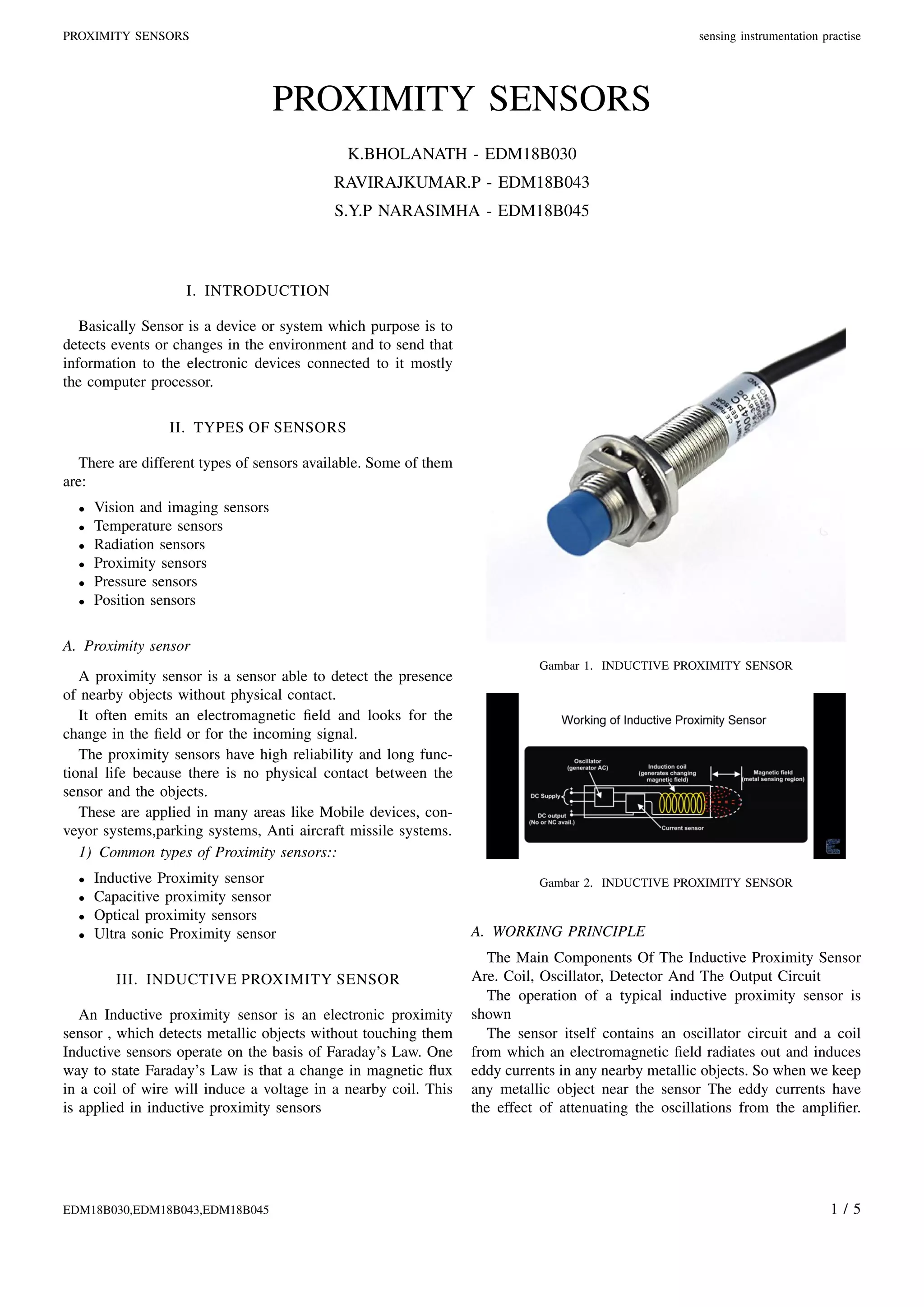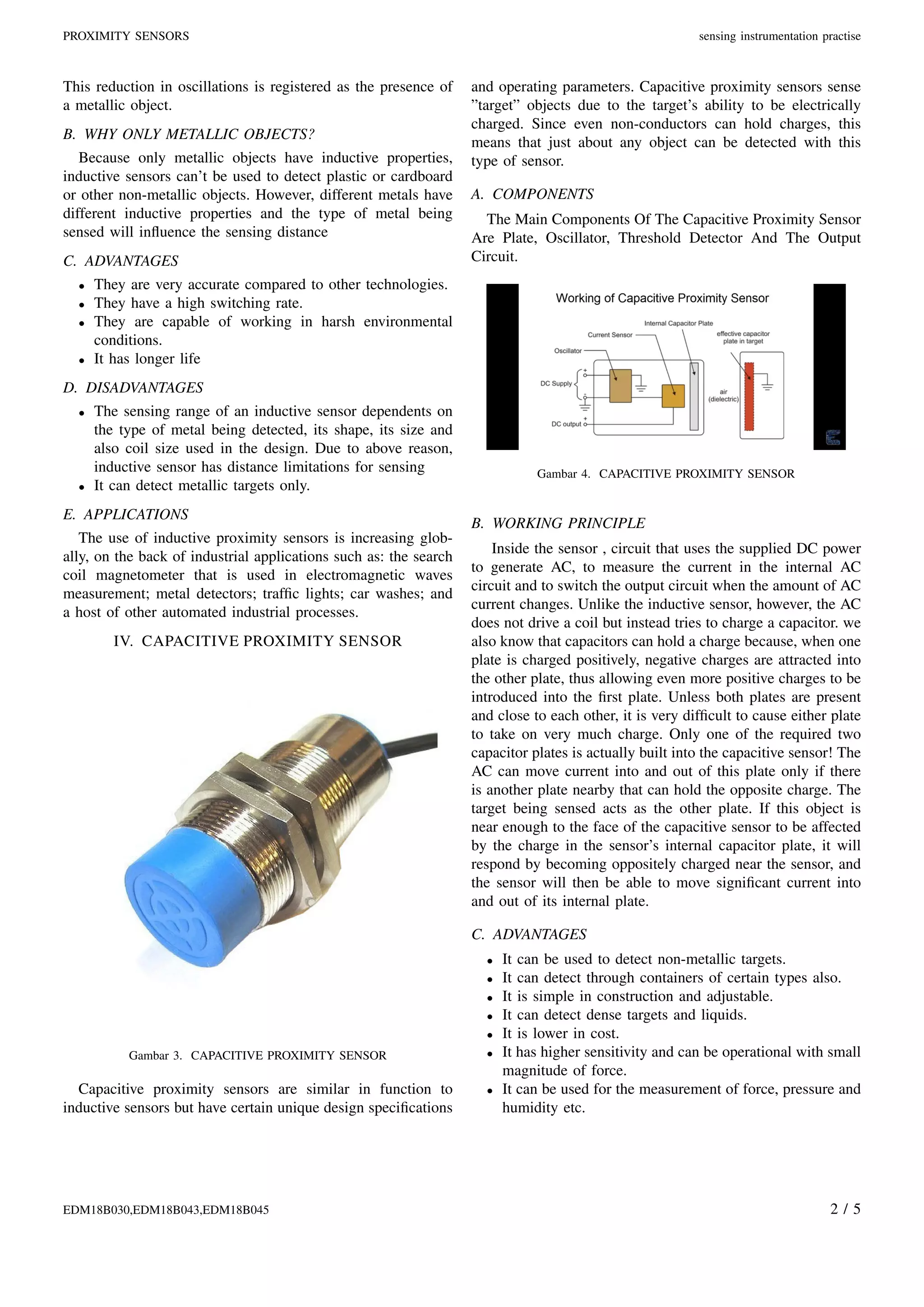The document discusses different types of proximity sensors. It focuses on inductive, capacitive, and optical/photoelectric proximity sensors. For inductive sensors, it describes how they detect metallic objects using electromagnetic fields to induce eddy currents. Capacitive sensors can detect both metallic and non-metallic objects by measuring changes in capacitance. Optical proximity sensors use a light emitter and detector, and can operate in through-beam, retroreflective, or diffuse reflection modes to detect objects. Common applications of proximity sensors include mobile devices, conveyor systems, parking systems, and more.




